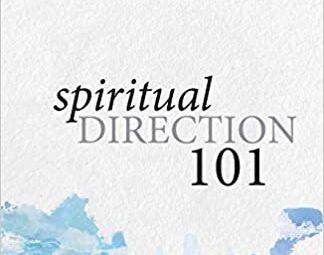April 16, 2019
What You Need to Know About Spiritual Direction Training Programs
spiritual direction, spiritual direction training programs, Spirituality
Spiritual direction training programs are unlike any other school you might attend. They are a hybrid of a retreat, a spiritual formation class and intensive training. The Hesychia School of Spiritual Direction, which I run, just ended our 2019 program, and I’ve been reflecting on the effect these schools have on the aspiring spiritual director and some basic precepts you need to know going in.
Spiritual Direction Training is Hard
Training to be a spiritual director is not academically hard, but it is emotionally hard and taxing for many people, especially the highly sensitive people who are usually drawn to this work. If you attend a residential program (where you leave home and stay at the school for several days or weeks at a time), you need to factor in the difficulty of travel and being away from home. Some people really enjoy this and others count the days until they can return to their comfort zone!
Other programs are regional, and you attend for one day or a weekend each month over a long period of time (usually 2 years). If you are commuting, factor in the stress of driving and consider if you want or need to spend 2 years in training. What I find is that older adults who have been working in some form of ministry for many years prefer to get their training in a shorter period of time. But it’s a personal choice.
Some programs require you to spend several months doing spiritual direction and visiting with a supervisor in order to get your Certificate of Completion. Factor in the cost of using a supervisor (believe me, though, it is worth the money).
There are so many details that can make a program feel more difficult to you than it needs to be, so look around carefully and consider the structure of the program in order to get the right fit for you.
If the program “fits” it won’t feel so hard.
Spiritual Direction Training is Intense
In the program I run, we spend 4 weeks learning the basics of spiritual guidance. Because we are short, we focus like a laser beam on the skills of spiritual direction. Every day, participants learn a new skill or facet of spiritual direction. And it comes at them fast.
Even if you choose a longer program, what you learn at each class session will probably be quite new and you will want to make sure you don’t miss anything. For this reason, I always recommend that people in training programs give themselves a lot of time after classes to process what they have learned. Read over your notes, take time for silence to let it soak in, and read books or articles related to the subject you have just learned. This will reinforce your learning.
Because the training can be so intense, don’t expect you will learn it all the first time you encounter it. Be kind to yourself and remember that even your teachers didn’t learn this the first year they did spiritual direction. It takes a lot of life experience to become confident and to find your way of being a spiritual director.
Spiritual Direction Training May Stretch You Theologically
The Hesychia School is housed at a Catholic retreat center, run by a United Church of Christ minister and features a week of learning how spiritual guidance is done in a number of other religions. We invite teachers to share their understanding of spiritual direction and of the spiritual life in their own language. So, our Islam teacher speaks of Allah, our Buddhist teacher is a non-theist—which is common for that philosophical tradition, and our Christian teachers refer to God and the Bible now and then.
What happens is that theists and committed Christians find non-theist language and concepts challenging and non-theists or people who claim no particular spiritual tradition find theistic (especially Christian) language challenging.
No matter what type of program you choose, there will be a theological viewpoint that gives the program a foundation. In the first day, I outline the theological assumptions that the Hesychia School faculty and staff find useful for spiritual direction. We don’t expect everyone to have the same assumptions, however, we want to be transparent about where we are coming from.
Naturally, when you discover the theological assumptions beneath the program you attend, you may find some of them uncomfortable—depending on your own theology. The gift of spiritual direction, as taught in most programs, is the emphasis on accepting other people’s theology and spiritual path just as it is, being interested and nonjudgmental, and becoming OK with that. If you are so set in your theology that you cannot abide by a differing one, you will probably not be happy in most spiritual direction training programs. We teach aspiring directors to be open to working with people who may be quite different from them.
Spiritual Direction Training is Just the Beginning
Once you have received your Certificate of Completion in a program and you begin working as a spiritual director, your training is lifelong. You will learn so much as you offer spiritual direction and you’ll need a mentor and teacher to help you. That’s the role of the Spiritual Direction Supervisor. Your training program should either have you experience supervision as part of the training or spend time explaining and teaching what supervision is and encouraging you to enter it as soon as you start working with people in direction. You will need to take written case studies (using no identifying information about the directee) to the supervisor to talk about those moments in direction when you feel perplexed, overwhelmed, “out of your element,” or moments of particular joy and excitement. Supervision is about learning more about yourself as a spiritual director.
You will also need to develop for yourself a plan for continuing education. You can take webinars from Spiritual Directors International (www.sdiworld.org) or find in-person classes at retreat centers. Determine what you want and need to learn more about and dive into a self-directed learning experience.
I hope the program you choose has a faculty and staff that is willing to hear from you after you graduate and help you if you need support and encouragement. Sometimes all you need is a phone call or email chat to find out if you are on track. I know my teachers have always been available and interested in how I’m doing—and as a teacher, I love hearing from graduates.
Are you ready to enter a spiritual direction program? I hope this post helps you make that decision and gives you a realistic view of some of the challenges you may face in a program. If you feel ready to enter the ministry of spiritual direction, these challenges should not discourage you, but simply raise your awareness so that you aren’t surprised if and when you encounter them.
If you want to talk more about this, send me an email at teresa@teresablythe.net. I am taking on new clients in spiritual direction and supervision, so if you would like to know more about working with me, let me know. My new book, Spiritual Direction 101 covers a lot of useful information about spiritual direction and training programs. You can find it online at Amazon.




